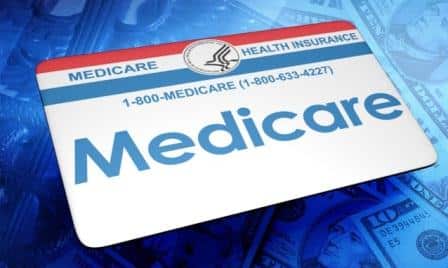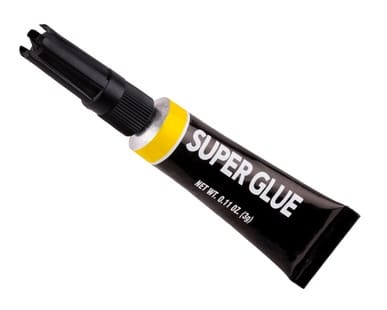
Deep Vein Thrombosis blood clots can be deadly but are preventable!
Risks of Deep Vein Thrombosis
Deep Vein Thrombosis (DVT), also referred to as Deep Venous Thrombosis, is a blood clot located within a deep vein, usually in the leg. A blood clot that breaks free and travels up to the heart or lungs is referred to as a Pulmonary Embolism (PE), which can stop blood flow and cause sudden death. The CDC estimates up to 100,000 Americans die every year from preventable DVT/PE
In addition, Deep Vein Thrombosis blood clots in the leg can permanently damage veins. The result in 50% of DVT survivors is Chronic Venous Insufficiency which results in long-term leg pain, heaviness and swelling that can progress to difficulty in walking, changes in skin color and open leg sores (known as leg ulcers). Deep Venous Thrombosis can significantly impair quality of life.
Causes of Deep Vein Thrombosis
Many patients ask us, "can varicose veins cause blood clots?" According to a recent study, 5% of patients diagnosed with chronic venous insufficiency, compared to the general population, are at risk for DVT. There is a distinct increased risk for patients over 70-years-old and obese. There are several factors known to contribute to the risk of DVT although a blood clot can occur in almost anyone.
- Heredity (Genetics)
- Age
- Obesity
- Smoking
- Lack of Exercise
- Pregnancy or Recent Birth
- Recent Surgery or Hospitalization
- Cancer Treatments
- Prolonged Sitting (Airplane Travel)
- Extended Bed Rest
- Oral Contraceptives
- Hormone Replacement Therapy
- Alcohol Consumption
Symptoms of Deep Vein Thrombosis
- Increased warmth in the affected area
- Pain or tenderness in the leg, ankle or foot
- Red or discolored skin
- Swelling in the affected area
Treatment of Deep Vein Thrombosis
The absolute best way to diagnose Deep Venous Thrombosis is with a Full Vein Exam and Duplex Ultrasound. A medical clinic with an experienced vein specialist should be able to get you in the same day for diagnosis if you have any concern about blood clots in your legs. Treatment and prevention will be accomplished in several ways depending on the patient risk factors and severity but usually starts with blood thinning medication.
Prescription compression stockings are a common preventative measure as are range of motion exercises, treating underlying blood disorders and vein therapy for Chronic Venous Insufficiency. An experienced vein doctor can discuss all treatment options with you after proper diagnosis from a Full Vein Exam and Duplex Ultrasound.
Question & Answer 5 weeks post-EVLT, veins along my inner thigh have turned brown, and one spot is slightly red. Is this normal? Question: It’s my 1st week in Vietnam and I’m here for an additional two-and-a-half weeks. My doctor closed up a vein in my groin area 5 weeks ago. I’ve just noticed on…
Read MoreQuestion: I am 20 years old with a history of undiagnosed autoimmune disease, which is currently in an acute flare. After suffering from a case of phlebitis in greater saphenous vein of the right leg for two months, I was just recently diagnosed with venous insufficiency in both the greater and smaller saphenous veins of…
Read MoreQ & A Pregunta: ¿Qué cubre el seguro, estoy en Medicare con un suplemento. Respuesta: Medicare con un suplemento cubre las visitas a la oficina, los ultrasonidos y las intervenciones necesarias, típicamente al 100%. Por lo general, no hay un gasto de bolsillo asociado con el tratamiento en la oficina.
Read MoreQ & A Question: What do insurance cover, I am on Medicare with a supplement. Answer: Medicare with a supplement covers the office visits, necessary ultrasounds and interventions, typically at 100%. Usually there is not an out of pocket expense associated with in-office treatment.
Read MoreQ & A Pregunta: ¿Cuál es el costo promedio si tiene varices en una pierna y arañas vasculares en la otra? Respuesta: la mayoría del tratamiento de las venas varicosas, si es médicamente necesario, está cubierto por el seguro. Los costes del tratamiento de la vena de la araña varían dependiendo de la cantidad de…
Read MoreQ & A Question: What is the average cost if you have varicose veins in one leg and spider veins in the other? Answer: Most varicose vein treatment, if medically necessary, is covered by insurance. Spider vein treatment costs vary depending on the amount of veins present, if the insurance will cover them (medically necessary) and…
Read MoreVenaSeal El último tratamiento para las varices puede parecer que es directamente de una película de ciencia ficción, pero la sustancia utilizada para cerrar las venas anormales, pegamento del cianocrilato, se ha utilizado en procedimientos médicos y cirugías por décadas. ¡ Créalo o no, el pegamento del cianocrilato se ha utilizado los procedimientos desde 1949,…
Read MoreVenaSeal The latest treatment for varicose veins may seem like it is straight out of a science fiction movie, but the substance used to close off abnormal veins, cyanoacrylate adhesive, has been used in medical procedures and surgeries for decades. Believe it or not, cyanoacrylate adhesive has been used procedures since 1949, and other types…
Read MoreAlgunos buenos consejos generales fueron recientemente compartidos por el Consejo de salud de Estados Unidos sobre varices y arañas vasculares. Hay algunos puntos adicionales que deben ser considerados cuando se discute la salud venosa. Con respecto a lo que hay que recordar; es importante mantener una hidratación adecuada. Al hacerlo, se fomentará un flujo sanguíneo…
Read MoreSome good general advice was recently shared by U.S. News Health Tip regarding varicose and spider veins. There are a few additional points that should be considered when discussing venous health. Regarding do’s and don’ts to remember; it is important to maintain adequate hydration. In doing so, one will encourage healthy adequate blood flow thereby…
Read More






